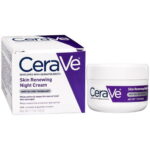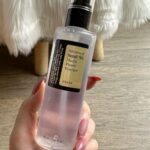Do you notice that you break out every time you get your period? If so, you’re not alone, as hormonal acne plagues more than half of all women in America.
This type of acne happens when hormones trigger high androgen levels. High levels of this hormone lead to excess oil, which can cause you to break out.
If you suffer from hormonal acne, you can take steps to make it better. We go over everything you need to know to stop hormonal acne in its tracks in this handy guide.
Causes of Hormonal Acne
Acne can form because of either fungal or hormonal reasons. Fungal acne results from too much yeast, whereas hormonal acne comes from too much oil.
Both types of acne start in the hair follicles. With hormonal acne, too much oil can happen because of changes in a person’s hormones. The oil mixes with bacteria found in the pores of your skin and can turn into acne.
Hormonal acne hits most often in a person’s 20s to their 40s. Stress, sleep, and oily skin products can worsen your hormonal acne.
Some factors that exacerbate your hormonal acne are out of your control. Anytime you have a significant hormone shift, you are susceptible to hormonal acne.
If you find you get acne before your period and during it, you’re dealing with hormonal acne. This type of acne can also show up during pregnancy and menopause.
Certain medical conditions are responsible for hormonal acne. Polycystic ovary syndrome is one example of a condition that causes hormonal acne. Genetics also play a role in how likely you will have this type of acne.
Are you getting testosterone treatments? If so, you could find yourself with hormonal acne.
Symptoms of Hormonal Acne
Acne is often used as a catch-all term for various skin bumps. The following types of acne can show up in different parts of your body like your face, back, shoulders, and chest.
Blackheads
If you notice small black dots on your skin, you have blackheads. This occurs when a pore becomes clogged with dirt.
Cysts
If a blockage forms deep within the skin, it can develop into a cyst. These appear as hard lesions and can harm your healthy skin.
Papules
These pimples appear on the skin’s surface. They usually look like little red bumps with no white head.
Pustules
You have a pustule if you see a blemish with a white head in the middle. Resist the urge to pop these, as this can result in scarring.
How to Stop Hormonal Acne

To control your period acne, you’ll need a targeted monthly plan. During the month, your body will go through four menstrual cycle phases. Minor tweaks in your skincare routine during these phases can help control your acne.
Phase One: Your Period
Phase one lasts roughly six days or however long your period lasts. This is the phase you will focus on keeping your skin clean and hydrated.
When your body is in this phase, it will have lower estrogen and progesterone. Low levels of these hormones can dry out your skin. The increase in prostaglandins can make skin feel more sensitive.
There are a few things you should keep in mind during this phase:
- No waxing or exfoliating
- Drink extra water
- Get your sleep
Try a honey mask if you suffer from hormonal breakouts during this phase. This mask will hydrate and soothe any breakouts you may have.
Phase Two: The Follicular Phase
Part two of your period is the longest of the four. During this time, your body gears up to release an egg.
In this phase, the rise of estrogen and collagen gives your skin a glow. Keep this glow going by adding a vitamin C serum to your routine.
Add a lactic acid exfoliating treatment during this phase. This scrub will keep your pores squeaky clean. If you need to try out a new skincare product, now is the time to try it out.
Phase Three: Ovulation
The third part of your period cycle is all about prevention. Here, your testosterone and estrogen are on the rise. You’ll also see a surge in luteinizing hormone, which is necessary for the release of the egg.
Keep your skin as clean as it can be during this phase. Don’t skip out on any part of your skincare routine. Keep up with the lactic acid exfoliator during this phase too.
Phase Four: Luteal Phase
The final phase focuses on keeping excess oil at bay.
The luteal phase sees a rise in testosterone, which can cause your skin to produce more oil. Progesterone, another hormone that is high during this phase, tightens pores. When the pores shrink, the oil gets trapped and can cause acne.
Keep these tips in mind during this phase:
- Use a mild cleanser
- Have a spot treatment on hand
- Use a clay mask for breakouts
Treating Hormonal Acne
Sometimes a comprehensive skincare routine isn’t enough to stop acne. Depending on the severity of your acne, you can go several different treatment routes.
If your acne isn’t too severe, you may be able to prevent breakouts with over-the-counter solutions. A dermatologist can help if you have stubborn hormonal acne that won’t go away.
They may prescribe a topical cream like a retinoid or antibiotics to combat your acne. You may need a steroid injection to clear up cystic acne.
Other hormonal acne treatments include birth control and light therapy. Your dermatologist can help figure out the best course of treatment to put you on.
Don’t Let Hormonal Acne Ruin Your Life
Although hormonal acne can be a frustrating condition, you can take steps to minimize it. With some help from a dermatologist and lifestyle changes, you’ll be on your way to clearer skin!
Acne isn’t the only skin condition that many people deal with. Check out our skincare articles today for more skin tips and tricks!





